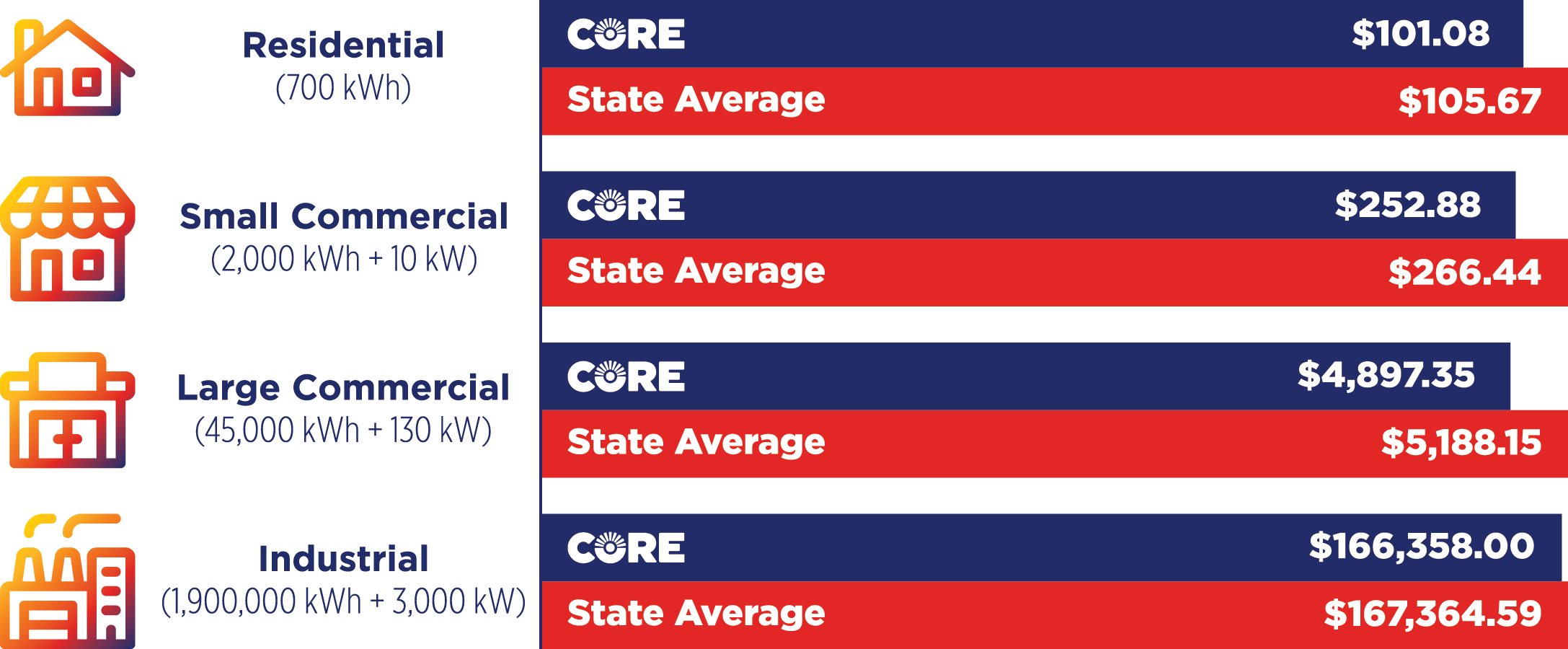A statewide survey of electric utilities shows CORE members pay less on average.
CORE’s average bills – residential, small commercial, large commercial and industrial – are lower than the average bills of other reporting Colorado electric utilities, according to the Colorado Association of Municipal Utilities’ (CAMU) July 2023 survey of nearly 50 electric utilities, including cooperatives, municipalities and investor-owned utilities (IOUs).
Per the survey:
• The average cost for 700 kilowatt-hours (kWh) of service on CORE’s residential rate – $101.08 – is lower than both the $105.67 average among all types of electric utilities and the $109.61 average among electric cooperatives.
• The average for 2,000 kWh with a 10-kilowatt (kW) peak on CORE’s small commercial rate is $252.88. Averages among all types of electric utilities and cooperatives are $266.44 and $258.72, respectively.
• On CORE’s large commercial rate, 45,000 kWh with a 130-kilowatt peak costs an average of $4,897, compared to the average of $5,188 among cooperatives, municipalities and IOUs.
• Under CORE’s industrial rate, 1,900,000 kWh with a 3,000-kilowatt peak costs an average of $166,358, compared to $167,365 among all utility types. CORE is committed to keeping electric service affordable. While most other electric utilities introduced rate increases in the last year, we will have no general rate increase in 2023. We also returned $5 million in capital credits to members in September, bringing our 10-year total to more than $120 million.

